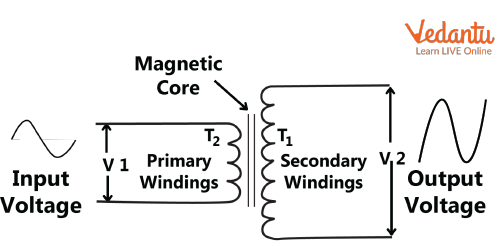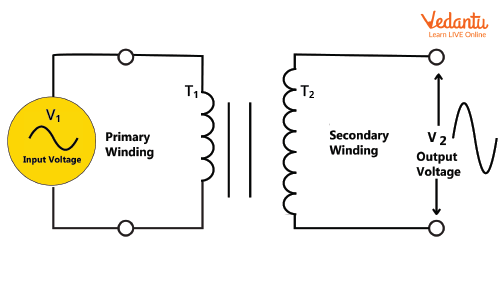




A Brief Idea about Step-up Transformer
A transformer is an electrical gadget that moves electrical energy from a rotating flow circuit to at least one different course. Likewise, it is utilized principally to increment or diminish voltage—made of two electrically separated loops that work on the Faraday standard of ‘common acceptance’. During this cycle, an emf is prompted in the transformer's optional curl by adjusting the attractive motion streaming in the essential loop winding.
By increasing the number of spins on the primary coil, a step-up transformer raises low voltage to a greater voltage. The increase in voltage is due to the primary coil's increased number of turns, which results in a drop in the current. This is significant as it allows the use of fewer wires for long-distance power transmission. To enhance the voltage of an electrical current, a step-up transformer is employed. It accomplishes this by converting a low voltage input to a greater voltage output. The primary coil of a step-up transformer has a larger number of turns than the secondary coil.
What is a Step-up Transformer?
A step-up transformer is a transformer that converts high current and low voltage from the primary side into the soft wind and high voltage values on the secondary side. Just like a step-down transformer, just reverse the step-up transformer. It is well-known that with the help of the primary side winding, which turns the electrical energy in the magnetic core of the transformer into magnetic energy, the secondary side of the transformer converts it into electrical energy. Any transformer can theoretically be used as a step-up and a step-down transformer. It is solely dependent on the direction of energy flow.
Step-up Transformer Construction
The core of the transformer and the windings play a vital role in the manufacturing of step-up transformers, which are explained in detail below.
1. Winding in a Step-up Transformer
The winding in a step-up transformer aids in the current passage to the transformer. The secondary winding wire is thinner and has many turns, whereas the primary winding wire is thicker and has fewer turns. The primary winding, in general, takes less power voltage than the secondary winding, which aids in the use of greater voltage power. Copper and aluminum are the materials used in winding a step-up transformer.

Step up transformer
2. Core
Thin silicon steel is used to make the core and it is also called the ‘magnetic core’. The precipitating material utilized in the core's construction is designed to allow the magnetic flux to flow freely. For the body, less coercive materials like silicon steel are preferred. The main feature is that it improves the transformer's efficiency, which reduces the magnetic field lines in the air.
Working Principle of Step-up Transformer
Faraday's law of electromagnetic induction and mutual induction governs the operation of the transformer. On the transformer core, there are normally two coils: the main coil and a secondary coil. Strips are used to connect the core laminations. The mutual inductance of the two coils is very high. A fluctuating magnetic flux is created when an alternating current passes through the primary coil. This shift in magnetic flux induces an emf (electromotive force) in the secondary coil, which is connected to the primary coil, according to Faraday's law of electromagnetic induction. The term for this is ‘mutual induction’.
Working of a Step-up Transformer

Schematic diagram of the transformer
A schematic diagram of a step-up transformer is shown in image 2, with T1 and T2 representing the turns of the primary and secondary windings and V1 and V2 representing the input and output voltages, respectively. The transformer's output winding is the secondary winding, whereas the primary winding is the transformer's input winding. The secondary winding of a step-up transformer has more wire turns than the primary. Hence, the output voltage is higher than the input voltage.
A step-up transformer's current is an alternating current, which flows in one direction before reversing and floating in the opposite direction when the wind is halted. The magnetic field's north and south poles are changed when the current reverses. A magnetic field is created around the wire or the winding by the flow of electricity.
The magnetic field induces a voltage in the wire in the step-up transformer. When a step-up transformer is put in a moving magnetic field, voltage is generated in the second coil. The alternating current in the primary winding produces a moving magnetic field that induces a voltage in the secondary winding, known as ‘mutual induction’.
Step-up Transformer Formula
The following equation describes the relationship between the number of turns in the step-up transformer and the voltage in each coil:
Where,
V1 = Voltage in the secondary coil, V2 = Voltage in the primary coil.
T2 = Turns on the secondary coil, T1= Turnson the primary coil.
Step-up Transformer Applications
Here, the application of the step-up transformer has been explained which are as follows:
Small step-up transformers can be found in electrical and electronic equipment.
Step-up transformers are also used for electric power motors, X-ray equipment, microwave ovens and other electronic devices.
Used to step up or increase the generated voltage to a greater voltage level, a vast power step-up transformer is employed as a generating step-up transformer.
Step-up transformers are utilized in electronic equipment such as inverters and voltage stabilizers for low to high voltage stability.
Step-up transformers are more commonly employed in power electronic circuits because of their modest weight and dimensions. Also, their application can now be observed in current electronic equipment.
Conclusion
Step-up transformers are essential for transmitting power from generating stations to remote places where it must be sent to a utility facility. Power generation and transmission systems rely heavily on step-up transformers. As an essential part of the electrical grid, these generating stations are often positioned distantly from populated areas.
Transformers are used for a wide range of applications. A transformer, for example, is frequently used to reduce the voltage of conventional power circuits to operate low-voltage devices and raise the voltage from electric generators to transmit power over long distances. These transformers play a significant role in daily life, since they adjust the alternating current and deliver a consistent amount of electricity to your device. This ensures smooth operation and longer life, not only of a machine but also of the transformer.
FAQs on Step-up Transformer Important Concepts for JEE
1. What is the purpose of a step-up transformer? What exactly is the distinction between a step-up and a step-down transformer?
A step-up transformer is used for electrical losses during long-distance transmission. A step-up transformer raises the voltage at the power station while lowering the current. This means that the current flowing via the overhead cables is relatively minimal and may be dispersed across large distances. A step-up transformer is used to increase the voltage from primary to secondary (more secondary winding turns than primary winding rotates). On the other hand, a step-down transformer is designed to perform the exact opposite.
2. What is the significance of a step-up transformer?
A generator step-up transformer is used at all electricity-generating power plants and this is the most common application of a step-up transformer. Those transformers are known for having high turn ratios. The voltage generated in the energy-producing process is boosted and readied for long-distance transmission. At the power station, a step-up transformer raises the voltage while lowering the current.
This means that the current flowing via the overhead cables is relatively minimal and may be dispersed across large distances. Step-up transformers raise the incoming current's voltage and step-down transformers lower the incoming current's voltage.
























